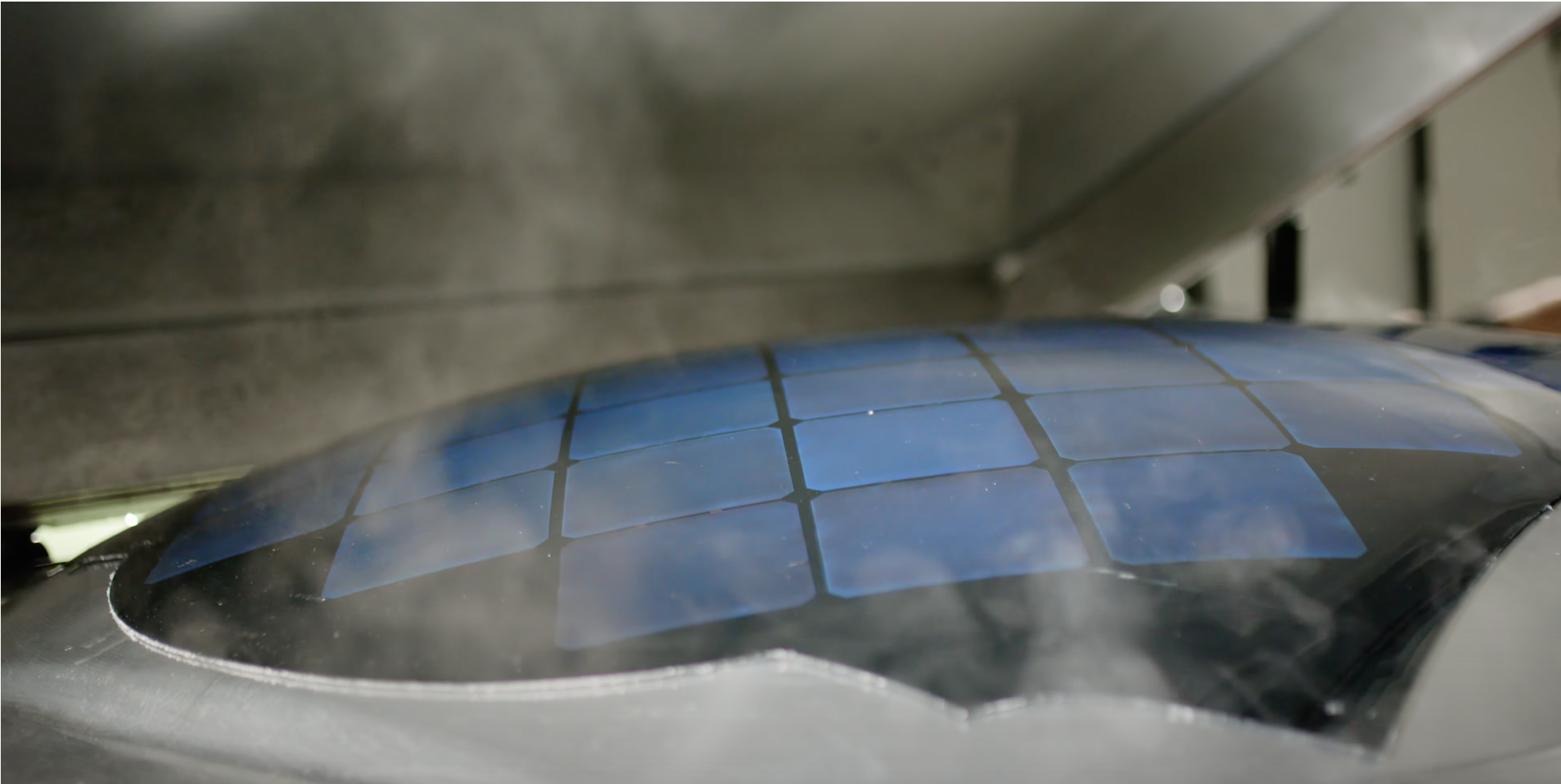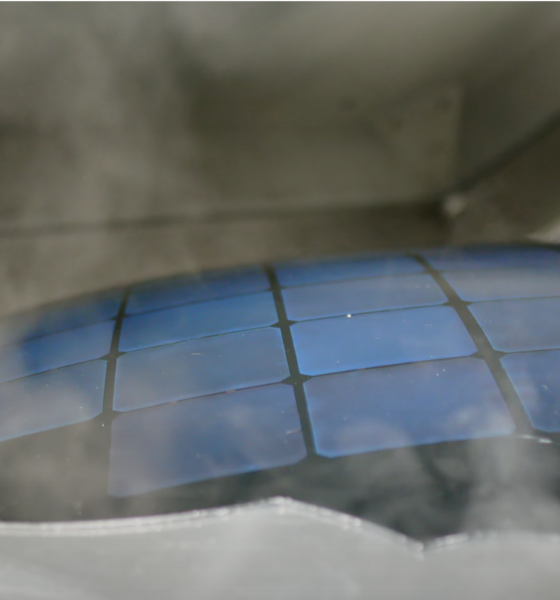Update: 3:46 PM EST 12/19: Quote from Aptera added to para. 6
Due to recent economic turbulence, the future of solar EVs is being called into question.
This morning, Sono Motors reservation holders were hit with a shocking notification; the company is on the verge of abandoning its solar electric vehicle project due to a lack of funds. A few weeks prior, solar EV brand Aptera announced that they would be making yet another prototype variation and pushing back its production start date. And while Lightyear Motors has begun producing its Lightyear 0 solar EVs, it is far from the scale many hoped for. So is this the end of solar EVs? It’s not immediately clear.
Starting with the announcement from Sono Motors this morning, the message was grim. Despite securing over 20,000 orders, they couldn’t secure the necessary investment to continue the development of their upcoming vehicle. However, this is not the end. At the very least, Sono will continue to produce solar panel technology as they already have been, but they also have another route. Sono is throwing a hail mary play and asking reservation holders to either increase their investment into the company, increase their downpayment, or even share the #savescion tag.
Looking to Aptera, many were optimistic earlier this year when the company showed off the Gamma prototype, a vehicle that at the time was supposedly production ready. Optimism was built further when Teslarati interviewed Aptera CEO Chris Anthony, where the CEO claimed that production would start in early 2023. Now it appears those plans may have changed.
Not only will Aptera be developing another prototype vehicle, the Aptera Delta, but production has become funding-dependent. And even with the funding, the company will be nine months away from beginning any delivery, according to a recent Aptera webinar.
Aptera Motors sent this comment in response to an inquiry from Teslarati:
Our development plan consists of four phases: Alpha, Beta, Gamma, and Delta. We have efficiently completed the first three phases and are currently in Delta, the final phase of Aptera’s path to production, which includes: the completion of our production-intent design, systems integration & Delta builds, crash testing and production validation, and lastly, the start of production. Once we meet our funding objectives, we will be able to provide a more accurate delivery timeline. In the meantime, we thank our reservation holders for their patience and continued support.
Finally, the glimmer of hope for solar EVs, Lightyear Motors has begun production of its solar EV in Finland. However, the company has been criticized for its small production volume and morose production timeline, only planning to produce 150 units. The company has defended the move as it plans for the vehicle to demonstrate technology ahead of a mass market option.
What is being seen in the solar electric vehicle space is colloquially called “production hell.” As countless EV startups have come to market over the past few years, there is a reason that essentially only Tesla, Lucid, and Rivian have actually made it to market; production is harrowing, and funding might be even more challenging.
Overall, the sad reality is that these EV startups are going through the gauntlet, and simply due to the challenge of introducing a new vehicle to the market, they are suffering for it. And while many consumers, engineers, and company CEOs have pointed out the benefits of solar EVs, that doesn’t necessarily mean they will make it to the market. Here’s to hoping that each of these manufacturers can work their way out of the woods and bring these remarkable technologies to the market.
What do you think of the article? Do you have any comments, questions, or concerns? Shoot me an email at william@teslarati.com. You can also reach me on Twitter @WilliamWritin. If you have news tips, email us at tips@teslarati.com!

News
Waymo sues Santa Monica over order to halt overnight charging sessions
In its complaint, Waymo argued that its self-driving cars’ operations do not constitute a public nuisance, and compliance with the city’s order would cause the company irreparable harm.

Waymo has filed a lawsuit against the City of Santa Monica in Los Angeles County Superior Court, seeking to block an order that requires the company to cease overnight charging at two facilities.
In its complaint, Waymo argued that its self-driving cars’ operations do not constitute a public nuisance, and compliance with the city’s order would cause the company irreparable harm.
Nuisance claims
As noted in a report from the Los Angeles Times, Waymo’s two charging sites at Euclid Street and Broadway have operated for about a year, supporting the company’s growing fleet with round-the-clock activity. Unfortunately, this has also resulted in residents in the area reportedly being unable to sleep due to incessant beeping from self-driving taxis that are moving in and out of the charging stations around the clock.
Frustrated residents have protested against the Waymos by blocking the vehicles’ paths, placing cones, and “stacking” cars to create backups. This has also resulted in multiple calls to the police.
Last month, the city issued an order to Waymo and its charging partner, Voltera, to cease overnight operations at the charging locations, stating that the self-driving vehicles’ activities at night were a public nuisance. A December 15 meeting yielded no agreement on mitigations like software rerouting. Waymo proposed changes, but the city reportedly insisted that nothing would satisfy the irate residents.
“We are disappointed that the City has chosen an adversarial path over a collaborative one. The City’s position has been to insist that no actions taken or proposed by Waymo would satisfy the complaining neighbors and therefore must be deemed insufficient,” a Waymo spokesperson stated.
Waymo pushes back
In its legal complaint, Waymo stated that its “activities at the Broadway Facilities do not constitute a public nuisance.” The company also noted that it “faces imminent and irreparable harm to its operations, employees, and customers” from the city’s order. The suit also stated that the city was fully aware that the Voltera charging sites would be operating around the clock to support Waymo’s self-driving taxis.
The company highlighted over one million trips in Santa Monica since launch, with more than 50,000 rides starting or ending there in November alone. Waymo also criticized the city for adopting a contentious strategy against businesses.
“The City of Santa Monica’s recent actions are inconsistent with its stated goal of attracting investment. At a time when the City faces a serious fiscal crisis, officials are choosing to obstruct properly permitted investment rather than fostering a ‘ready for business’ environment,” Waymo stated.
News
Tesla FSD v14.2.2 is getting rave reviews from drivers
So far, early testers have reported buttery-smooth drives with confident performance, even at night or on twisty roads.

Tesla Full Self-Driving (Supervised) v14.2.2 is receiving positive reviews from owners, with several drivers praising the build’s lack of hesitation during lane changes and its smoother decision-making, among others.
The update, which started rolling out on Monday, also adds features like dynamic arrival pin adjustment. So far, early testers have reported buttery-smooth drives with confident performance, even at night or on twisty roads.
Owners highlight major improvements
Longtime Tesla owner and FSD user @BLKMDL3 shared a detailed 10-hour impression of FSD v14.2.2, noting that the system exhibited “zero lane change hesitation” and “extremely refined” lane choices. He praised Mad Max mode’s performance, stellar parking in locations including ticket dispensers, and impressive canyon runs even in dark conditions.
Fellow FSD user Dan Burkland reported an hour of FSD v14.2.2’s nighttime driving with “zero hesitations” and “buttery smooth” confidence reminiscent of Robotaxi rides in areas such as Austin, Texas. Veteran FSD user Whole Mars Catalog also demonstrated voice navigation via Grok, while Tesla owner Devin Olsen completed a nearly two-hour drive with FSD v14.2.2 in heavy traffic and rain with strong performance.
Closer to unsupervised
FSD has been receiving rave reviews, even from Tesla’s competitors. Xpeng CEO He Xiaopeng, for one, offered fresh praise for FSD v14.2 after visiting Silicon Valley. Following extended test drives of Tesla vehicles running the latest FSD software, He stated that the system has made major strides, reinforcing his view that Tesla’s approach to autonomy is indeed the proper path towards autonomy.
According to He, Tesla’s FSD has evolved from a smooth Level 2 advanced driver assistance system into what he described as a “near-Level 4” experience in terms of capabilities. While acknowledging that areas of improvement are still present, the Xpeng CEO stated that FSD’s current iteration significantly surpasses last year’s capabilities. He also reiterated his belief that Tesla’s strategy of using the same autonomous software and hardware architecture across private vehicles and robotaxis is the right long-term approach, as it would allow users to bypass intermediate autonomy stages and move closer to Level 4 functionality.
News
Elon Musk’s Grok AI to be used in U.S. War Department’s bespoke AI platform
The partnership aims to provide advanced capabilities to 3 million military and civilian personnel.

The U.S. Department of War announced Monday an agreement with Elon Musk’s xAI to embed the company’s frontier artificial intelligence systems, powered by the Grok family of models, into the department’s bespoke AI platform GenAI.mil.
The partnership aims to provide advanced capabilities to 3 million military and civilian personnel, with initial deployment targeted for early 2026 at Impact Level 5 (IL5) for secure handling of Controlled Unclassified Information.
xAI Integration
As noted by the War Department’s press release, GenAI.mil, its bespoke AI platform, will gain xAI for the Government’s suite of tools, which enable real-time global insights from the X platform for “decisive information advantage.” The rollout builds on xAI’s July launch of products for U.S. government customers, including federal, state, local, and national security use cases.
“Targeted for initial deployment in early 2026, this integration will allow all military and civilian personnel to use xAI’s capabilities at Impact Level 5 (IL5), enabling the secure handling of Controlled Unclassified Information (CUI) in daily workflows. Users will also gain access to real‑time global insights from the X platform, providing War Department personnel with a decisive information advantage,” the Department of War wrote in a press release.
Strategic advantages
The deal marks another step in the Department of War’s efforts to use cutting-edge AI in its operations. xAI, for its part, highlighted that its tools can support administrative tasks at the federal, state and local levels, as well as “critical mission use cases” at the front line of military operations.
“The War Department will continue scaling an AI ecosystem built for speed, security, and decision superiority. Newly IL5-certified capabilities will empower every aspect of the Department’s workforce, turning AI into a daily operational asset. This announcement marks another milestone in America’s AI revolution, and the War Department is driving that momentum forward,” the War Department noted.










